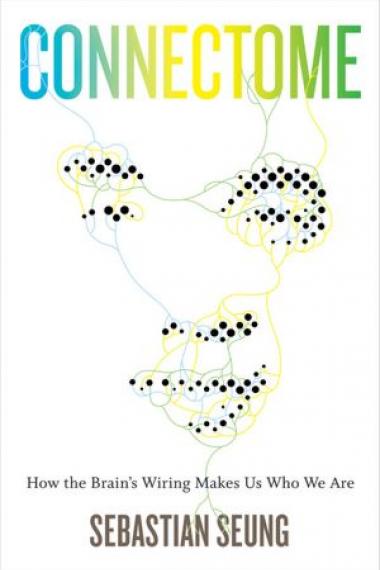Who are you? Once, that question was answered by philosophers. Today, it’s often the province of geneticists who parse our DNA for clues to our identity. In Connectome, Sebastian Seung, a neuroscientist at MIT, proposes a different source. The essence of personhood, he says, lies not so much in our genetic code as in the way the 100 billion neurons in each of our brains are wired to one another.
“Genes alone cannot explain how your brain got to be the way it is,” Seung writes. “As you lay nestled in your mother’s womb, you already possessed your genome but not yet the memory of your first kiss.” Forging memories, imagining the future, acquiring a skill—these acts all require changes in the brain that cannot have been preordained by your DNA. Key to Seung’s view is the way that structures in your brain—and the behavior of your person—evolve over your lifetime, in contrast to your genome, whose content is fixed. Neurons are plastic, constantly creating and destroying connections with one another. Moreover, the electrical sparks that course through them can spike with varying degrees of strength.
Though Seung adopts the tone of the genial professor in his lessons on neural circuitry, his aim is quite earnest: to sound a rallying call to map uncharted territories. He wants nothing less than a complete snapshot of every neural connection in the human brain: a connectome. The task will be immense. In 1986, neuroscientists published the first and only definitive connectome—for the nervous system of Caenorhabditis elegans, a lowly roundworm one millimeter long. After images were taken of several thousand worm slices, the 7,000 connections made by the worm’s 302 neurons were traced by hand, a project that took more than 12 years. If one were to apply the same manual approach to the far denser circuitry of the human cortex, Seung tells us, it would take a million person-years just to map a cubic millimeter.
Seung describes some of the advances that have put a human connectome in view, if not in reach. Diamond-tipped knives can slice brain matter into wafers less than 50 nanometers thick. (It takes a billion nanometers to make a meter.) These wafers are slapped onto a conveyor belt that brings each slice under an electron microscope for imaging. The limiting factor is not the gathering of these images but the identification of the neurons within them, and the sequential tracing of these neurons through the slices. Seung’s lab at MIT is developing software that could automate the identification of the pathways.
Critics of the connectionist view say that a complete map of the pathways still doesn’t constitute a comprehensive understanding of the brain. The shifting chemical bath in which neurons sit is also important. And the neurons themselves cannot be modeled as simple transistors, governed by binary rules. There are hundreds of types of neurons, each with different behaviors. The brain, Seung suggests, is not so much a tangled forest as it is a tropical jungle, rich in biodiversity.
But there is no denying that a map would be a major first step toward a completely mechanistic understanding of the brain. In the last two chapters of Connectome, Seung proposes some logical, if speculative, ends. If an aging brain is just a machine—an old car in need of new parts—why accept death? For $200,000, Alcor, a cryonics company, will freeze clients in liquid nitrogen and promises to thaw them when scientists can repair and revive their neural pathways. (Storage of just one’s sawed-off head is a better deal, at $80,000.) Even stranger are the dreams of transhumanists who see the connectome as the key not just to outlasting the body but transcending it. If the circuits can be perfectly known, why not upload that information onto a computer and live happily ever after as a simulation?
It’s hard to tell how seriously Seung takes these dreams of an afterlife. He is far more optimistic that a connectome can help in the here and now, in the development of therapies for connection disorders such as autism and schizophrenia. A connectome would mark a turning point in human history, he says. In several million years of evolution, humans have used their brains to create technologies. In the age of the connectome, we would be creating technologies to change the very brains by which these technologies were conceived.

